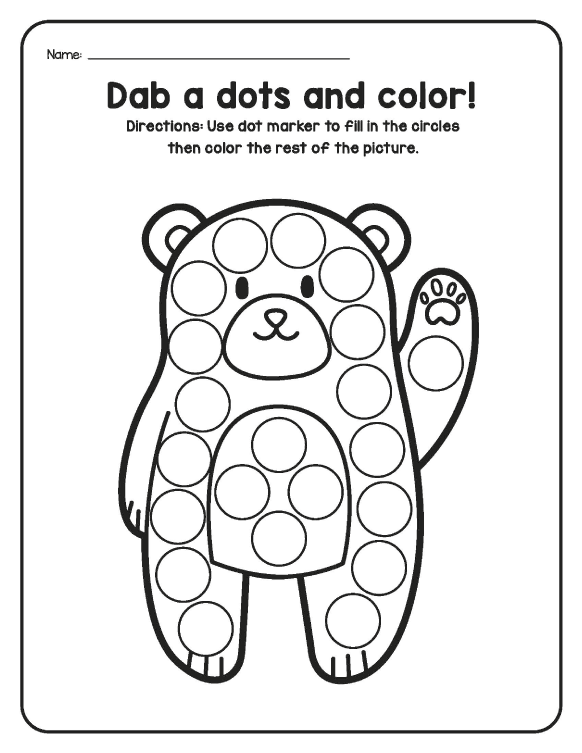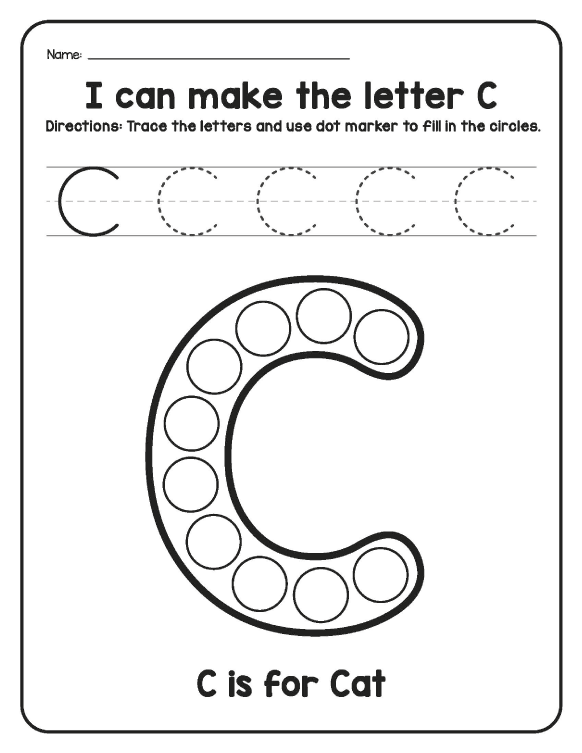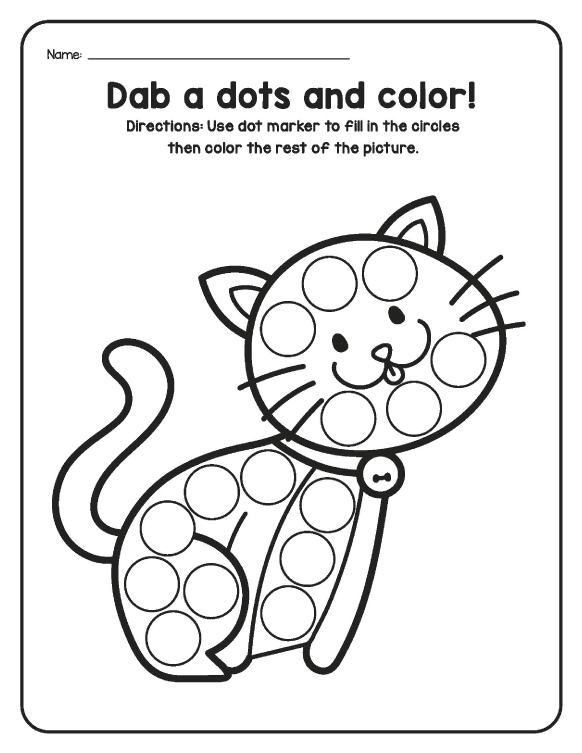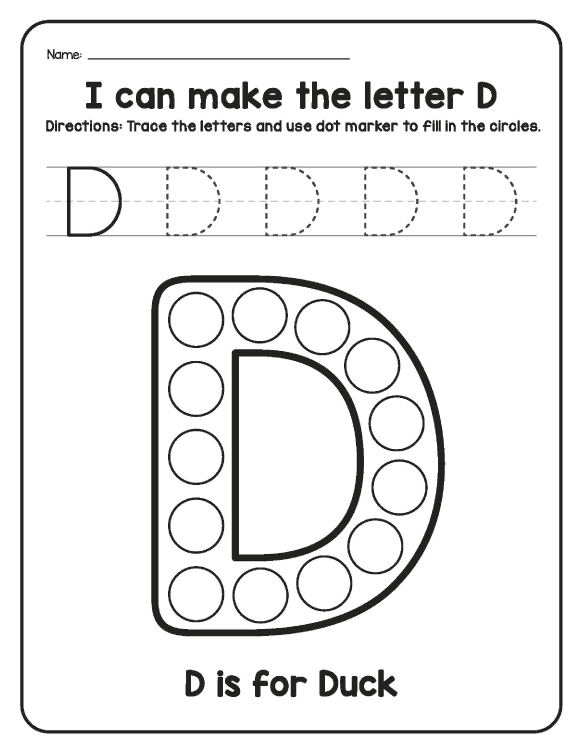Table of contents
Alphabet tracing pages are one of the simplest yet most effective tools to help children begin their journey into reading and writing. These pages introduce little learners to the shapes, sounds, and strokes of each letter in a fun, structured, and hands-on way. Whether your child is learning at home, in preschool, or kindergarten, using printable alphabet tracing pages can make learning letters exciting and interactive.
In today’s digital world, where screens dominate playtime, printable worksheets like alphabet tracing pages offer an opportunity to engage kids in fine motor skill development, letter recognition, and writing confidence. Parents, teachers, and caregivers alike can use these worksheets as part of a daily routine to strengthen a child’s foundational literacy skills — one letter at a time.

Why Alphabet Tracing Pages Are Important for Early Learners
Alphabet tracing pages are more than just coloring sheets with letters — they are stepping stones to literacy. Before children can write independently, they must first develop control over their hands and fingers. Tracing letters gives them the practice they need to form shapes, understand spacing, and follow directionality — all vital components of handwriting.
Here’s why alphabet tracing pages are essential for every young learner:
- Letter Recognition: Tracing helps children visually and physically familiarize themselves with each letter’s shape.
- Fine Motor Skills: The act of holding a pencil or crayon and tracing lines builds dexterity and hand-eye coordination.
- Muscle Memory: Repetition on alphabet tracing pages allows kids to memorize letter formations naturally.
- Early Literacy Foundation: Recognizing and writing letters helps children prepare for reading and spelling later on.
- Confidence Building: When children see their progress, it boosts their self-esteem and motivation to learn more.
Alphabet tracing pages make these benefits accessible to everyone — whether used in classrooms, homeschooling, or casual family learning time.

What Makes Alphabet Tracing Pages So Effective
The power of alphabet tracing pages lies in their simplicity and adaptability. Unlike many learning tools, they don’t require expensive equipment or special training. All you need is a pencil, crayon, or marker — and a little curiosity from your child.
Here are some features that make alphabet tracing pages so effective:
- Structured Learning: Each page introduces one letter at a time, both uppercase and lowercase, helping children master consistency.
- Visual Reinforcement: Many alphabet tracing pages include images that correspond with each letter (like “A for Apple”), reinforcing vocabulary and comprehension.
- Repetition with Purpose: Consistent tracing develops writing rhythm and reinforces proper letter formation.
- Flexible Use: Parents can print alphabet tracing pages at home, laminate them for reuse, or include them in binders for easy storage.
- Playful Design: Fun fonts, pictures, and color-friendly layouts make tracing feel like a game rather than a chore.
How to Use Alphabet Tracing Pages for Maximum Learning
To get the most out of alphabet tracing pages, it’s important to create an engaging, supportive environment that encourages exploration and repetition. Here’s a simple guide on how to introduce and use these worksheets effectively:
1. Start with Familiar Letters
Children often enjoy learning the letters in their own name first. Begin by tracing those letters before moving on to the rest of the alphabet. This creates a personal connection to the activity.
2. Introduce Letters Gradually
Don’t rush through the alphabet. Use alphabet tracing pages for a few letters at a time — perhaps 2 or 3 per week — to allow for mastery and reinforcement.
3. Combine Tracing with Sound Learning
When using alphabet tracing pages, say the sound of each letter aloud. For example, when tracing “B,” say “B is for ball.” This bridges the gap between visual recognition and phonetic understanding.
4. Add a Creative Twist
Encourage kids to color in the pictures or letters after tracing. Creativity enhances memory retention and keeps the learning process fun.
5. Make It Interactive
Turn alphabet tracing into a game. Hide letters around the room, or reward children with stickers when they complete their tracing pages. Motivation goes a long way in early education.
6. Review and Reuse
Repetition is key. You can laminate alphabet tracing pages or place them in plastic sheet protectors so children can trace them multiple times using dry-erase markers.

Types of Alphabet Tracing Pages Available
There are many styles and formats of alphabet tracing pages to suit different learning levels and preferences. Below are some popular types you can find online or create yourself:
1. Basic Uppercase and Lowercase Tracing
These are the classic alphabet tracing pages, with dotted letters for children to follow. They help in distinguishing between uppercase and lowercase versions of each letter.
2. Themed Tracing Pages
Some alphabet tracing pages include themed illustrations like animals, fruits, or vehicles. For example, “C is for Cat” or “T is for Train.” This adds fun context and aids vocabulary development.
3. Cursive Alphabet Tracing Pages
For older kids or advanced learners, cursive tracing pages help them transition smoothly into fluent handwriting.
4. Number and Letter Combo Pages
Some resources combine alphabet tracing with numbers, helping children practice both literacy and numeracy simultaneously.
5. Seasonal or Holiday-Themed Pages
Engage children throughout the year with alphabet tracing pages that feature themes like Christmas, Halloween, or Spring. These keep learning festive and fresh.
Free Printable Alphabet Tracing Pages Online
The internet is full of high-quality, free alphabet tracing pages that parents and educators can download instantly. Many websites offer PDFs that you can print as often as you like, making it easy to set up consistent handwriting practice.
Here are some features to look for when choosing alphabet tracing pages online:
- Clear, large fonts for easy tracing
- Dotted or dashed lines to guide writing direction
- Illustrations that match each letter
- Thick borders and spaces for young learners
- Optional color elements to make the experience engaging
When selecting alphabet tracing pages, prioritize simplicity and legibility — these help ensure kids don’t get overwhelmed while learning.

Printable Alphabet Tracing Pages vs. Digital Tracing Apps
While technology has introduced interactive alphabet tracing apps and tablets, printable alphabet tracing pages remain a timeless and effective tool. Let’s compare the two approaches:
| Feature | Printable Alphabet Tracing Pages | Digital Tracing Apps |
|---|---|---|
| Motor Skill Development | Enhances real pencil control | Limited to finger or stylus tracing |
| Screen Time | Screen-free and healthy | Increases screen exposure |
| Accessibility | Easy to print anytime | Requires a device or app |
| Cost | Often free | May require subscriptions |
| Flexibility | Can be colored, reused, or laminated | Limited creative options |
Both have their benefits, but printable alphabet tracing pages offer a tactile, personal, and screen-free approach — ideal for young children developing foundational skills.
Tips for Parents and Teachers Using Alphabet Tracing Pages
To ensure that alphabet tracing pages are both educational and enjoyable, consider these practical tips:
- Use the Right Tools: Offer pencils with soft grips, crayons, or washable markers suited for small hands.
- Provide Encouragement: Praise effort rather than perfection. Celebrate every letter traced.
- Integrate into Daily Routines: Spend just 10–15 minutes a day on tracing activities.
- Display Progress: Hang completed tracing pages on the wall or fridge to motivate kids.
- Incorporate Sensory Learning: Try tracing letters in sand, rice, or shaving cream for a tactile twist.
- Group Learning: If you’re a teacher, use alphabet tracing pages during group literacy time for collaborative learning.
These tips transform tracing into a joyful learning habit that builds lifelong writing confidence.
Days of the Week: An Introduction to Calendars for Young Learners
Fun Activities to Pair with Alphabet Tracing Pages
To make learning more dynamic, combine Letters tracing pages with playful, hands-on activities that reinforce letter recognition:
- Letter Hunts: Hide letter cards around the room and have children find and trace matching letters.
- Alphabet Songs: Sing along to classic ABC songs while tracing letters.
- Art Time: After tracing “A,” have kids draw an apple or ant.
- Story Integration: Read a book that focuses on a specific letter and trace it afterward.
- Letter Collages: Cut out magazine pictures of objects starting with each letter.
These creative combinations make alphabet pages part of a broader, sensory-rich learning experience.

Creating Your Own Alphabet Tracing Pages
If you prefer a personal touch, you can easily create custom alphabet tracing sheet using free online tools or word processors. Here’s how:
- Open a Document: Use Word, Google Docs, or Canva.
- Choose a Tracing Font: Search for “dotted” or “handwriting” fonts (many are free).
- Type Each Letter: Include uppercase and lowercase versions.
- Add Images: Insert clip art or simple illustrations that match each letter.
- Print and Test: Print a few pages and have your child try them out.
Creating custom alphabets tracing pages allows you to personalize learning — whether it’s focusing on your child’s name, favorite animals, or seasonal themes.
Conclusion:
Alphabet tracing sheets may seem simple, but their impact on early childhood development is profound. They nurture fine motor skills, build confidence, and lay the groundwork for reading and writing success. These free, printable worksheets are accessible, effective, and endlessly versatile — a perfect tool for parents, teachers, and caregivers who want to give children a strong start in literacy.
By making learning letters a fun and interactive experience, alphabet tracing pages turn practice into play and curiosity into lifelong learning. Whether you’re introducing the alphabet for the first time or reinforcing writing skills, these pages are a must-have resource in every child’s educational journey.
🧠 Download worksheets now and enjoy moments of learning, thinking, and fun with your children. (52 Pages) 🧠